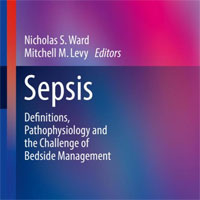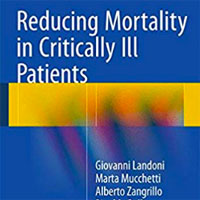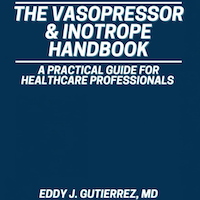Tag: anesthesia
Physics for Anesthesiologists and Intensivists: From Daily Life to Clinical Practice
This book, now in its 2nd edition, discusses, explains and provides detailed, up-to-date information on physics applied to clinical practice in anesthesiology and critical care medicine, with the aid of simple examples from... read more
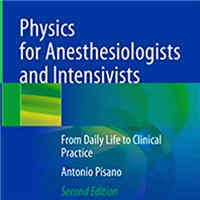
Cardiac Anesthesia: The Basics of Evaluation and Management
This concise book meets the market need for an accessible and up-to-date guide on understanding and managing cardiac anesthesia patients. It reflects the continual evolution of the very complex field of cardiac anesthesia.... read more
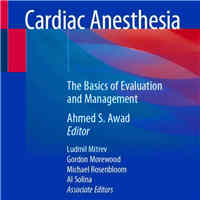
Principles of Intensive Care, CCU, ICU and Dialysis (Book 1): Vascular Access, ICU and Drug Treatment, Hemodynamic Monitoring
Anesthesia and intensive care are one of the most important disciplines in medical, paramedical and nursing sciences and requires spending attention, time, gaining enough information and experience to be able to evaluate... read more
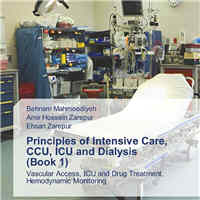
Safe Tracheal Extubation After General Anesthesia
Tracheal extubation generates less interest than tracheal intubation. Research, guidelines and clinical anecdotes tend to focus on airway management at the beginning of anesthesia, and it is rare for the challenges of extubation... read more
Etomidate vs. Ketamine for Emergency Endotracheal Intubation
While the primary outcome of Day 7 survival was greater in patients randomized to ketamine, there was no significant difference in survival by Day 28. A prospective, randomized, open-label, parallel assignment, single-center... read more
The Importance of Accurate Glucose Monitoring in Critically Ill Patients
Critically ill patients are not found just in intensive care units, but throughout the hospital: emergency departments, post-anaesthesia care units, operating rooms, and many other environments now care for the critically... read more
Pressure Support vs. Spontaneous Ventilation during Anesthetic Emergence – Effect on Postoperative Atelectasis
The incidence of postoperative atelectasis was lower in patients undergoing either laparoscopic colectomy or robot-assisted prostatectomy who received pressure support ventilation during emergence from general anesthesia... read more
Nitrous Oxide Avoidance for Patients Undergoing Major Surgery
Avoidance of nitrous oxide and the concomitant increase in inspired oxygen concentration decreases the incidence of complications after major surgery, but does not significantly affect the duration of hospital stay. The... read more
Inhaled Sedation in the ICU: A New Option and Its Technical Prerequisites
Andreas Meiser summarizes the current literature on inhalation sedation of critically ill patients. To meet clinical demands, he describes the development of new devices to administer volatile anesthetics together with common... read more
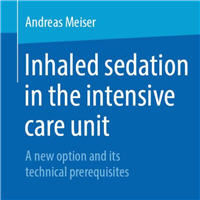
Rapid Sequence Induction: Where Did the Consensus Go?
The conduct of Rapid Sequence Induction (RSI) in current emergency practice is far removed from the original descriptions of the procedure. Despite this, the principles – rapid delivery of a definitive airway and avoiding... read more
Increasing the Reproducibility of Research Reduces the Problem of Apophenia
Apophenia, or the tendency of identifying meaningful patterns where none truly exist, is part of the human condition. We cannot surmount it, but we can strive to manage its influence. In the research context, apophenia can... read more
Midazolam and Ketamine Produce Neural Changes in Memory and Pain
Painful stimulation during light sedation with midazolam, but not ketamine, can be accompanied by increased coherence in brain connectivity, even though details are less likely to be recollected as explicit memories. In... read more
Ketamine: A Review of an Established Yet Often Underappreciated Medication
has proven to be a complex medication with unusual properties, heterogeneous, interconnected mechanisms, and diverse, sometimes contested, clinical uses. Ketamine's story begins in 1956 when scientists identified a new... read more
Practice Recommendations on Neuraxial Anesthesia and Peripheral Nerve Blocks during the COVID-19 Pandemic
General anesthesia (GA) with airway intervention leads to aerosol generation, which exposes the health care team to risk of transmission of COVID-19 both during intubation and extubation. The odds of transmission of acute... read more
Balanced Opioid-free Anesthesia with Dexmedetomidine vs. Balanced Anesthesia with Remifentanil for Noncardiac Surgery
This trial refuted the hypothesis that balanced opioid-free anesthesia with dexmedetomidine, compared with remifentanil, would result in fewer postoperative opioid-related adverse events. Conversely, it did result in a greater... read more
Apnoeic Oxygenation for Emergency Anaesthesia of Pre-hospital Trauma Patients
Apnoeic oxygenation did not influence peri-intubation oxygen saturations, but it did reduce the frequency and duration of hypoxia in the post-intubation period. Given that apnoeic oxygenation is a simple low-cost intervention... read more
Anaesthetists and intensive care doctors are at lower risk of COVID-19 infection compared with other medical staff
Following the first recorded death of an anaesthetist from COVID-19 in the UK in November 2020, a review of available data published in Anaesthesia (a journal of the Association of Anaesthetists) shows that unexpectedly,... read more
Using Dynamic Variables to Guide Perioperative Fluid Management
Intravenous fluid administration is an integral part of patient management during anesthesia. This practice has a strong clinical rationale since a decrease in blood volume, either present before or developing during surgery,... read more
Is Locoregional Anesthesia a Functional Option for Major Abdominal Surgeries in the COVID-19 Era?
Based on our preliminary case series, awake open surgery has resulted feasible and safe. This approach has allowed to perform undelayable major abdominal surgeries on fragile patients when intensive care beds were not available.... read more
Crisis Management in Anesthesiology
The fully updated Crisis Management in Anesthesiology continues to provide updated insights on the latest theories, principles, and practices in anesthesiology. From anesthesiologists and nurse anesthetists to emergency physicians... read more
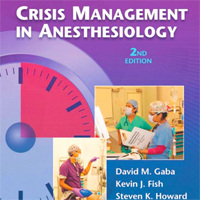
What If a COVID-19 Patient Needs a Surgery?
In the week of February 13–19, the World Health Organization reported that Singapore had more cases of COVID-19 than any other country outside of mainland China. We wish to share the protocol that we use in our hospital... read more
The Invasion of the Physician Assistants
I was a senior emergency medicine resident at Darnall Army Community Hospital in Fort Hood, TX, in 1992. I wanted to do an elective rotation in anesthesia and to work closer to home because my wife and I lived 50 miles... read more







